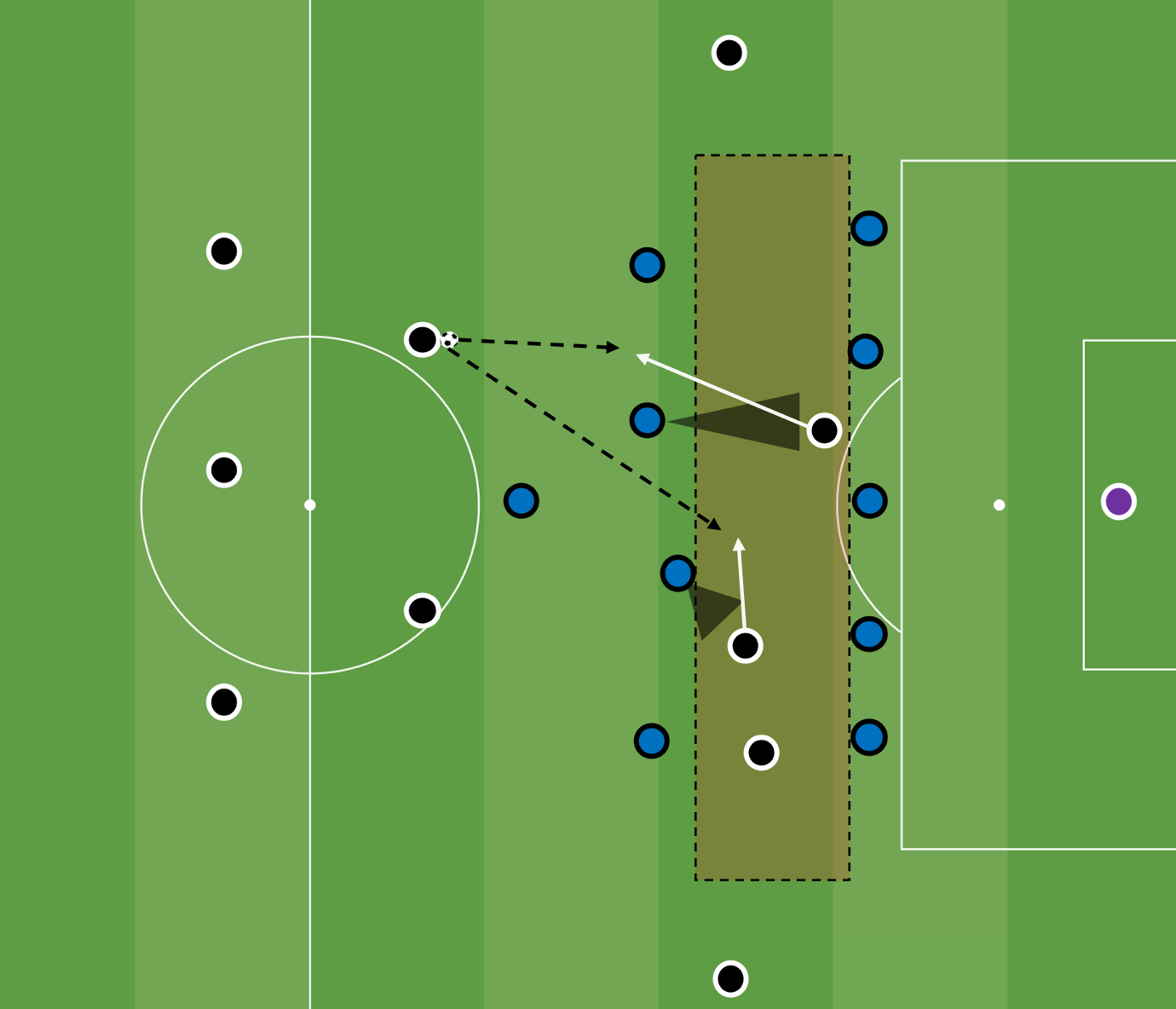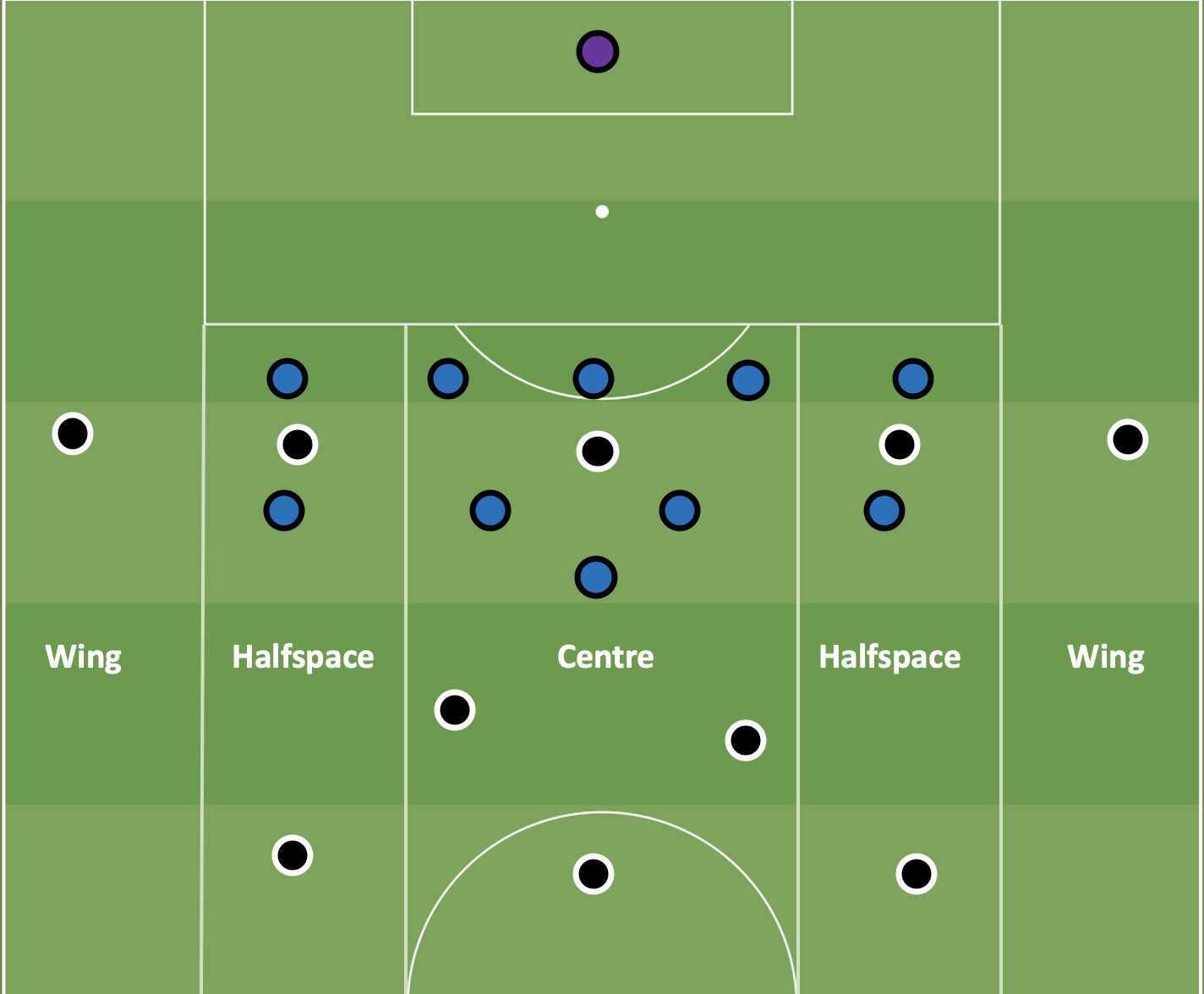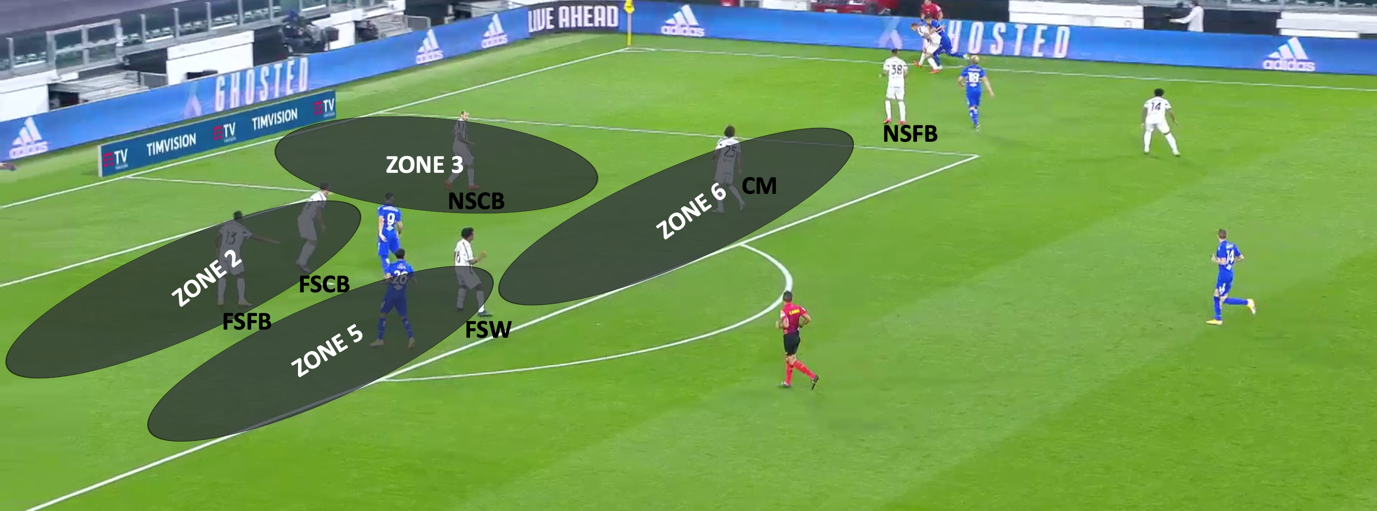The Tactical Blueprint Behind Andrea Pirlo’s Juventus
Before I begin with my tactical analysis of Andrea Pirlo’s Juventus, I’d like to give a massive thanks to @DaliborPlavsic_ for providing the Italian manager’s translated thesis.
Being appointed manager at one of the world’s biggest clubs with little to no prior coaching experience is an inconceivable feat, unless your name carries the same weight as Andrea Pirlo’s. The 41-year-old Italian replaced Maurizio Sarri after his aggregate defeat to Lyon in the UEFA Champions League. There has been a lot of intrigue about how the young manager will implement his coaching philosophy at a club with extremely high standards and an immediate demand for success.
We can get a good indication of Pirlo’s tactical philosophy by analysing his FIGC thesis which he wrote in 2019 for his UEFA Pro License. In the thesis, he outlines the way in which he would like his teams to play. It is quite apparent Pirlo wants his team to be the protagonist. He cites his footballing influences, which are Johan Cruyff’s Barcelona, Pep Guardiola’s Barcelona, Louis Van Gaal’s Ajax, Carlo Ancelotti’s Milan, and Antonio Conte’s Juventus.
Pirlo goes into much more depth with the offensive side of the game than the defensive side, and merely skims over transitional play. We can expect his Juventus team to dominate the ball, just as his predecessor wanted to. In this article, I will compare the tactical principles outlined in his thesis, to his early matches in charge of Juventus.
Offensive Phase
Construction
Pirlo’s “construction” subphase of his offensive organisation is the most structured and complex part of his possession play. Pirlo wants his team to play out from the back and during build-up, he stresses that a “clean exit is essential”.
He will alter his build-up mechanisms based on an analysis of the opponent, to ensure his team can play out from the back as effectively as possible. When constructing, there are 3 options for the players:
- To “conduct”
- To “filter”
- Increase the time and space available for 1 & 2
Pirlo wants to overcome the opponent’s pressure by using vertical passes to find the third man. He achieves this by using a rhombus structure to progress the ball. The player at the base of the rhombus is the ball carrier, he has options on either side, as well as a vertical option.
This “vertex” will look to be positioned between the lines, and the main priority will be to find the vertex through vertical play and third man movements. Below, we can see a diagram depicting the rhombus structure Pirlo wants to implement.
The base of the rhombus can also be the goalkeeper, who Pirlo wants to use in build-up, especially against a high press. We can see an in-game example of Pirlo’s rhombus progression structure in the image shown below against Claudio Ranieri’s Sampdoria.
Below, we can see another example of the rhombus, this time against Paulo Fonseca’s Roma.
In the first phase of build-up, Pirlo wants to have exactly a one man advantage – no more, no less. Having an extra player has the obvious advantage of providing a numerical advantage to provide the clean progression Pirlo wants. However, he does not want any more than a one player advantage, so as to not “waste” additional players, as he wants them to occupy advanced areas of the pitch.
The main priority during construction is to play in the central areas. It makes the opponent’s pressing more complicated, and there are more options when the ball is in the centre, thus making central construction more threatening to the opposition. Simply because – on the wings for example – the ball is forced towards the centre, while in the centre, the ball can be played in any direction.
Pirlo stresses that he does not want his team to force vertical play. Rather he wants to use rotations and interchanges to disorganise the opponent in order to create open passing lanes, for vertical progression. Pirlo’s offensive organization occurs at two speeds. When the ball is “behind”, the play is slow and methodical. When a free player receives between the lines, the play becomes much quicker and more direct towards goal.
When the ball carrier is in space, Pirlo wants the other players to attack into depth, while the ball carrier dribbles. If the rhombus structure is correctly formed, the vertex will prepare for a 1-2.
If the ball carrier is under pressure, the other players should drop to provide support. Pirlo wants his players to keep the structure in possession, which ensures progression of the ball is as clean as possible while also providing favourable counterpressing structures during defensive transition.
If a player who does not have possession of the ball is free, they must constantly look to receive in between the lines. Pirlo wants his team to look for diagonal passes and always look to find the third man.
“The third man is impossible to defend”-Xavi.
Offensive Phase
Development
The next phase of Pirlo’s offensive play is development. During development, there are three fundamental principles, which are:
- Maximum width provided on each wing
- Continuous search for players in the finishing area
- Frequent attacks into depth
We can expect the offensive system to change, but the fundamental principles will always be present. “In the offensive phase we do not have a fixed module, but the positioning and movements of players are for the search of achievement of our principles,” says Pirlo.
Pirlo emphasises how important those principles are. “These three macro principles should be thought of as containers that must always be full.” To go into more detail into each principle:
Offensive Phase
Development Principle 1: Width
Pirlo wants exactly one player to be on each wing, occupying the widest position possible. He wants only one player on each wing in order to position other players centrally. This forces the opposing fullback to make a choice. To remain wide and leave space in the centre, or halfspace, or to shift centrally and leave the wide man with time and space.
If the ball is on one side, the opposite wide player must remain high and wide in order to keep an option to switch available, which Pirlo wants his team to utilise often. “We drift to the right to attack on the left.” We can see an example of this extreme width on both flanks in the image shown below.
Offensive Phase
Development Principle 2: Find players in the finishing area
Pirlo refers to the finishing area as a mobile area which is found in between the opponent’s defensive and midfield lines. Finding players in this area is the main objective of the offensive phase. Players positioned in the finishing zone must constantly look to escape their opponent’s cover shadow and receive in space.
At least two players must be constantly positioned in this area, with others often joining. If the ball carrier is in space and is facing towards goal, at least two players must immediately attack into depth.
Offensive Phase
Development Principle 3: Constantly attack into depth
What Pirlo means when he refers to “attacking into depth” is making runs in behind. This is frequently mentioned in his thesis and seems to be Pirlo’s main method of chance creation. The opponent’s defensive line must be constantly under pressure.
We can see that Pirlo’s recruitment and player selection suits this. One can expect players such as Cristiano Ronaldo, Dejan Kulusevski, Álvaro Morata, and Aaron Ramsey to thrive in Pirlo’s offensive system.
Pirlo cites three reasons for his insistence on constant attacks into depth.
- Force the opponent’s defensive line deeper – either pushing the midfield line back, thus affording players more time deeper, or increasing the size of the finishing zone if the midfield line does not drop deeper.
- Keep the opposing defenders constantly, mentally engaged.
- Create goalscoring chances. “Attack the space, receive the ball… score!”
Pirlo will either play with one or two central attackers. If he plays with two, they make opposing movements, with one dropping deeper, while the other attacks into depth. If he plays with one – and the lone player is in the finishing zone – the wide attacker on the weak side will attack into depth.
Offensive Phase
Attacking the defensive line
Another key principle of Pirlo’s attacking play is the occupation of all five vertical zones (both wings, halfspaces, and the centre), thus the forward line must be composed of at least five players, with potentially more joining.
To facilitate this, Pirlo wants his team to attack in a 2-3-5 or 3-2-5. In his first two games in charge, he has used the 3-2-5. The 3-2-5 allows the team to have a 3-2 structure allowing for them to create the diagonal passing angles which Pirlo wants, while also providing solidity in defensive transition. In the image shown below, we can see this 3-2 against Sampdoria.
Even when they lined up as a back four on paper against Roma, Danilo at right back, shifted into the back three while Juan Cuadrado at left back pushed up higher to become the player high and wide on the left.
Pirlo has categorised this phase into three main scenarios:
- Player in space in the finishing zone
- Player in the finishing zone searching for an attack into depth
- A 1v1 situation on the wing, with the first priority, to look for the cross.
He prefers to play short but is not afraid to go more direct if the opposing defensive line is very high or has a weak tactical position. He wants his team to be unpredictable, so the team may go direct during the early phases of possession. Though the main idea is to arrive in the finishing area in a measured fashion.
The opponent’s penalty box must constantly be occupied with three or more players. During this phase, the winger on the far side will also attack into depth, to increase the occupation of the penalty area.
In the final third, Pirlo wants his players to enjoy creative freedom and individual brilliance to be emphasised, however the structure in order to get to the final third must always be maintained in the earlier phases.
Defensive Phase
Pressing
In the defensive phase, Pirlo has two main objectives:
- Avoid conceding goals.
- Win the ball as quickly and as high as possible.
Pirlo believes that – in the defensive phase – threatening the opponent is as important as defending the goal. He wants to maintain a high, aggressive, defensive line in order to compact the opponent’s half, while having a goalkeeper that is prepared to sweep up any attacks into depth. Pirlo prefers to press in the halfspace and the wings, as he says it is most difficult to regain the ball in the centre and in the opponent’s penalty box.
He particularly wants to isolate the opponent on the wing, where they will be pressed up against the touchline. Pirlo wants to isolate one or two opposing players on the weak side of their construction. He does not discuss particular pressing patterns, but the key principles are present.
In the example shown below, we can see how Morata keeps Jordan Veretout in his cover shadow, while Ramsey does the same to Lorenzo Pellegrini. This forces Roma to play to the wide areas as their central progression has been blocked.
Defensive Phase
Provision
When the ball is in their own half, Pirlo wants his team to reposition themselves in their starting position. The main objective of this phase is to prevent passes into the finishing zone. He wants his team to be compact, and shift from side to side in order to limit space for the opposition.
We can see an example of this phase in the image shown below. The team has organized back into their starting position (a 4-4-2). The team is compact, and the wide players have shifted over.
Defensive Phase
Defensive line
When the defensive line is at the halfway line, as mentioned earlier, Pirlo wants his goalkeeper to be positioned at the edge of the box in order to sweep up attacks into depth.
Pirlo wants to create 2v1 defensive overloads, with one player providing cover, while the other presses the ball-carrier.
When defending wide areas, Pirlo mentions the possibility of a central midfielder dropping into the defensive line in order to give the wide defenders better access to the wings without creating gaps. Pirlo has split the penalty area into six zones, as pictured in the diagram pictured below.
Pirlo wants each defender to occupy a zone based on the position of the ball. For example, when the ball is on the defending team’s right side, the near side centre back will shift into Zone 1, while the far side centre back will occupy Zone 2. The far side fullback will cover Zone 3.
If his team does not have enough players in the box, a central midfielder will drop into Zone 5, while the wide player on the far side will occupy Zone 5, with orientations towards Zone 6, context dependent.
The example Pirlo gives is clearly tailored to formation with four defenders, but we can see a very similar defensive structure in the example pictured below, where Juventus are defending the ball on their left.
Danilo acts as the far side fullback (FSFB), occupying Zone 2. Leonardo Bonucci is the near side centre back (NSCB), occupying Zone 3. Adrien Rabiot as the central midfielder (CM) has dropped into Zone 6, while Cuadrado acts as the far side winger (FSW) and occupies Zone 5. Gianluca Frabotta acts as the near side fullback (NSFB) and meets the opponent out wide.
Offensive Transition
Pirlo mentions that – upon recovery of the ball – the next step is dependent on the characteristics of the players. Having pacy attackers obviously lends the team towards fast breaks, while having players who can dribble the ball and retain possession well means that the team is more suited to regrouping and looking to break down the opponent with structured, positional attacks.
Regardless, Pirlo always wants his team to transition quickly when winning the ball near the opponent’s goal. He also wants his players to take up transitional positions during their defensive phase.
For example, a centre forward may drift wide in order to take advantage of the opponent’s high fullback – long before the ball has even been won. If a threatening counter does not materialise within 5-10 seconds, Pirlo wants his team to restart their structured offensive play.
Defensive Transition
When the ball is lost, Pirlo wants his team to immediately “re-agress”. Pirlo wants his team to collapse on the opponent’s ball carrier if they are near, while players positioned further away must be prepared for the ball to bypass the press.
Similarly to his offensive transition, players who are not affecting the play must be prepared for a defensive transition while his team has the ball. This “preventive” play requires his players to constantly be switched on, and ready for a turnover.
One can expect a team heavily predicated on possession to be vulnerable in defensive transition, and that has been the case so far for Juventus under Pirlo – particularly against Roma. Cuadrado would push high, leaving space down the left side, forcing Danilo (who was much more reserved) to tuck in centrally, leaving space on the right side. We can see this in action in the image shown below.
Conclusion
Pirlo’s appointment is an intriguing one. On one hand, seeing an inexperienced manager at their biggest title rivals means Conte’s Inter will see an opportunity to topple the monopoly that Juventus have built over the last decade. However, Pirlo’s tactical theory is strong, and – while it is still very early – the implementation seems to be sound.
He has a reliable method of chance creation, solid ball progression structures, and a compact defence. Both Juventus and Inter have been strengthened greatly in the transfer window, and we will have a genuine title race on our hands this season in Serie A.
By: Ty Levinsohn
Featured Image: @GabFoligno / NurPhoto















